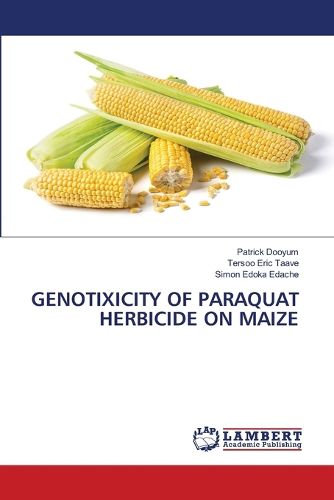Readings Newsletter
Become a Readings Member to make your shopping experience even easier.
Sign in or sign up for free!
You’re not far away from qualifying for FREE standard shipping within Australia
You’ve qualified for FREE standard shipping within Australia
The cart is loading…






This study investigates the genotoxic effects of paraquat, a non-selective herbicide, on maize (Zea mays) through controlled exposure at concentrations of 0.2, 0.6, and 0.8 mg/L. Gel electrophoresis and clustering analysis were employed to assess DNA fragmentation and genetic response, with distilled water-treated samples serving as controls. Results showed a concentration-dependent increase in DNA damage, marked by intensified DNA band fragmentation at 0.6 and 0.8 mg/L concentrations, indicating significant oxidative stress and potential genetic compromise. The control samples exhibited minimal genetic alteration, highlighting the herbicide-free baseline. Clustering analysis supported these findings, grouping higher concentrations together, suggesting similar genotoxic impacts at near-toxicity thresholds. These results align with existing literature on herbicide-induced oxidative damage in maize and underscore the need for cautious paraquat application in agricultural contexts.
$9.00 standard shipping within Australia
FREE standard shipping within Australia for orders over $100.00
Express & International shipping calculated at checkout
This study investigates the genotoxic effects of paraquat, a non-selective herbicide, on maize (Zea mays) through controlled exposure at concentrations of 0.2, 0.6, and 0.8 mg/L. Gel electrophoresis and clustering analysis were employed to assess DNA fragmentation and genetic response, with distilled water-treated samples serving as controls. Results showed a concentration-dependent increase in DNA damage, marked by intensified DNA band fragmentation at 0.6 and 0.8 mg/L concentrations, indicating significant oxidative stress and potential genetic compromise. The control samples exhibited minimal genetic alteration, highlighting the herbicide-free baseline. Clustering analysis supported these findings, grouping higher concentrations together, suggesting similar genotoxic impacts at near-toxicity thresholds. These results align with existing literature on herbicide-induced oxidative damage in maize and underscore the need for cautious paraquat application in agricultural contexts.